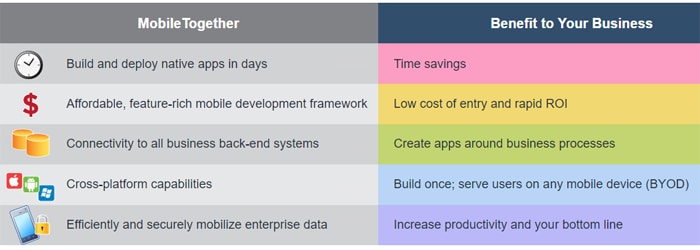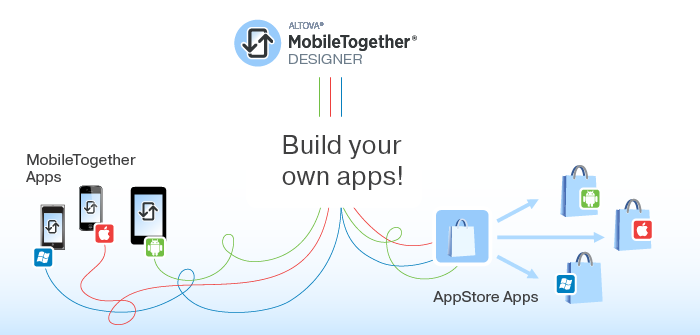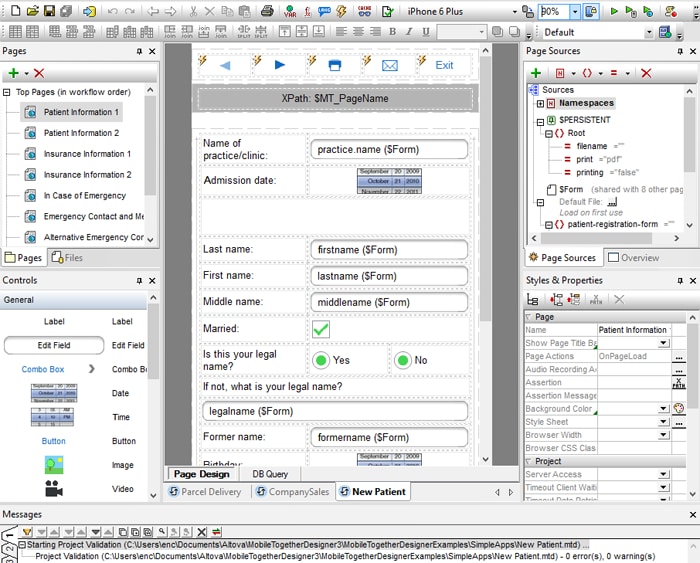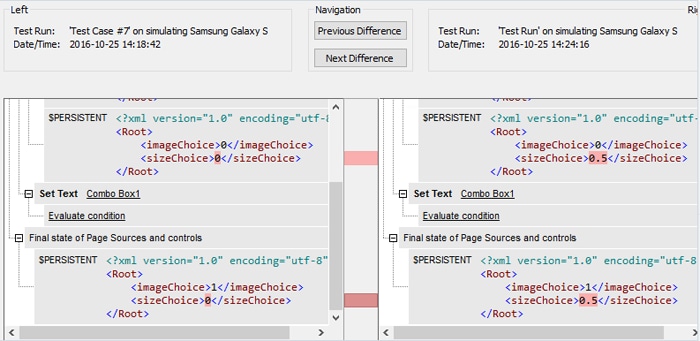Top 5 Requirements for RMAD Tools
Originally coined by analyst firm Gartner, RMAD (rapid mobile application development) isn’t just a hot acronym in app development for 2024 – it’s an absolute necessity. Waiting six to eight months for an app ensures that it will be completely obsolete once it’s finally ready for prime time: requirements will change, another app will fill the niche, or end users will already be entrenched with another solution.
In addition, a traditional, non-RMAD approach assumes you have a team of mobile developers ready to tackle the project, and for many businesses, hiring experienced app developers is a lengthy, expensive process. Outsourcing your app development work that well, either. Many have tried, but few have succeeded in getting third-parties to realize the original vision of the app, on time, and while ensuring the integrity of their intellectual property rights.
Luckily, with the increasing prevalence of RMAD tools, developing a sophisticated, full-featured app in a week or two – and with your existing tech team – is suddenly a reality. Of course, not all RMAD tools are created equal. Let’s take a look at the five top requirements you should demand in an RMAD solution.

According to Gartner’s Market Guide for RMAD Tools, “the growth of the RMAD market shows the pent-up demand for ‘coding-optional’ tools to build apps quickly and cost-effectively.” Unfortunately, there’s a great degree of variance in the market in terms of what can be achieved with such “low code” tools. Customers should be wary of solutions that promise quick fixes without the sophistication end users demand.
RMAD tools that deliver the best of both worlds – fast, easy app development, plus full-featured, slick apps that will delight users – share the following five characteristics:
- Native apps for all platforms. Any app needs to be available for all users on launch day. It’s no longer acceptable to release an iOS version and leave Android users waiting. Users expect native interaction between your app their device functionality – camera, messaging, video, geolocation, maps, etc., all must work seamlessly.
- Sophisticated functionality. Simply mobilizing an existing productivity task or quickly producing a basic web-based app is not going to meet the expectations of your boss or your end users.
- Comprehensive testing for all platforms. This may seem obvious – test and test again – but some solutions require you to purchase a third party testing solution, adding to expense, complexity, and time-to-market.
- Options for enterprise app scenarios. In-house and enterprise apps come with a unique set of challenges, including mobile security considerations, cross-device access options, and rapid update requirements.
- Support for diverse backend data sources. Tools that restrict app developers to one database type or cloud platform are just that – restricting and inflexible.
Let’s take a look at one framework designed for rapid mobile development.
MobileTogether – a Unique RMAD Tool

Altova MobileTogether takes a unique approach to RMAD by giving you the best of both worlds: low-code UI and control-flow design, plus the full flexibility of a functional programming language for selecting and manipulating data.
MobileTogether pioneered the “Action Tree” visual programming language for control-flow, event-handlers, etc. This lets you drag and drop actions into Action Trees, which provide a visual programming flow for the most common tasks.
At the same time, it utilizes the full flexibility of XPath/XQuery as a functional programming language for data manipulation. MobileTogether Designer includes a powerful expression builder and evaluator to help users who aren’t already familiar with those languages. In other words, you do not have to have mobile development experience to build an app in MobileTogether.
This approach allows firms of all sizes to build apps not only in record time, but, more importantly, with the functionality and sophistication they need to be effective, to capitalize on the benefits promised by the RMAD concept.
Apps for All Platforms
So how does it work? After developing your single app design in MobileTogether Designer, you can choose to deploy your app instantly to iOS, Android, and Windows users, or allow MobileTogether to generate code for native apps that you can then compile and submit to the respective app stores.
Here’s more on the difference between Instant Deployment for enterprise apps and AppStore Deployment for external or customer-facing apps.

OK, let’s circle back to the five requirements for RMAD tools above, specifically as they apply to the MobileTogether framework:
- Native apps for all platforms. You build your app once in MobileTogether Designer, and it takes care of rendering it properly in native apps for iOS, Android, and Windows desktops. There’s even an HTML5-browser based client for desktop users. Rest assured: HTML5 is only used for the browser-based client. Otherwise, these are native apps, and you get them all from a single design. Talk about rapid.

- Sophisticated functionality. Here’s the key. MobileTogether combines the speed of development described above with over 100 features for building the most advanced apps imaginable. You no longer have to sacrifice user experience or functionality in the name of getting your app about the door.
- Comprehensive testing for all platforms. Built into MobileTogether Designer are industry-leading app testing tools, including a full simulator for all platforms and form factors. Automated app testing features let you record and replay a series of tests on various devices, ensuring complete QA testing and bug-fix verification. Since these robust app testing tools are built in to MobileTogether, there’s no need to procure an expensive third-party solution.

- Options for enterprise app scenarios. Instant Deployment via MobileTogether is designed specifically for enterprise BYOD. End users simply download the free MobileTogether client from their app store of choice and connect to your MobileTogether Server, with comprehensive security considerations including SSL encryption, Active Directory integration, and more.
Since the MobileTogether app is free, employees can access the same solutions on their phone, tablet, PC, or all three – at any time. Instant Deployment ensures that enterprise customers have their app in 2-5 days, and any subsequent app modifications are available to end users instantly.
- Support for diverse backend data sources. Like all Altova products, MobileTogether supports the most popular back end data sources: XML, HTML, Web services, JSON, all major relational databases, and other formats via FlowForce Server integration. Support for all these options in a single version provides unmatched flexibility and affordability.
For more information, check out the full list of MobileTogether RMAD tools or simply give it a try by downloading the free MobileTogether Designer.

I wondered upon your blog and wanted to say that I have really enjoyed reading your blog posts. Any way I’ll be subscribing to your feed and I hope you post again soon.